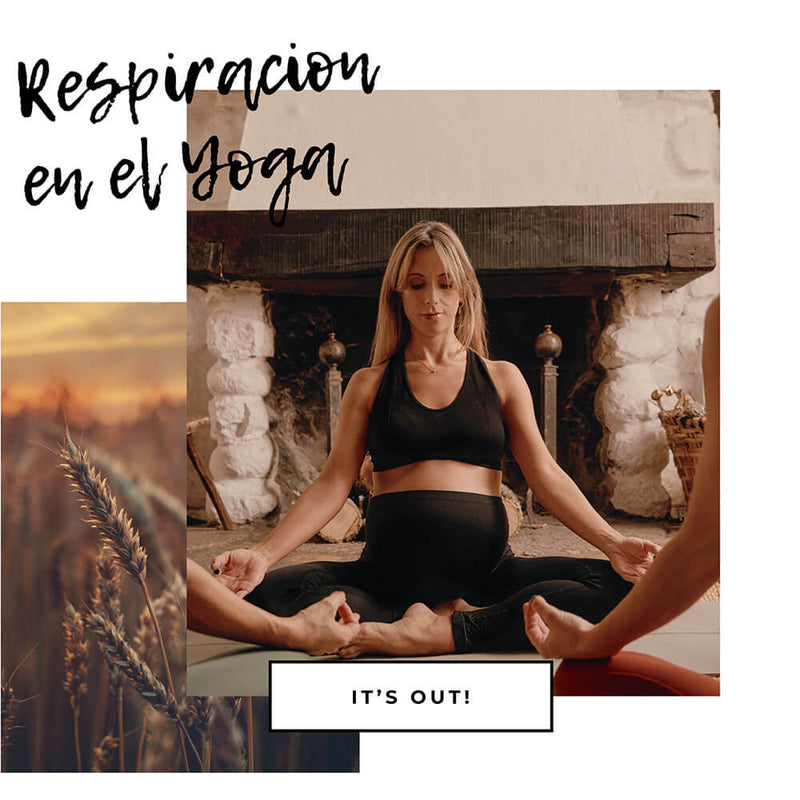Índice
The more life is lived by those who breathe the most air. - E. Browning
Last week we told you about the benefits of yoga, and one of them was the improvement in your breathing.
This week we teach you how to control your breathing so you can get all the benefits of this practice.
As yoga is the integration of the body with the mind, the first thing you have to learn in yoga to be able to integrate it is to breathe. It seems unbelievable but I'm sure that almost none of us do it well.
Breathing is the only physiological function that we can control and perform unconsciously and consciously. In yoga conscious breathing is essential to reach a state of complete relaxation and to be able to enjoy your practice to the fullest.
Breathing is also important to be able to be present. What matters is the here and now. If you control your breathing, you control your thoughts, and you can let go of all the anxiety and stress of everyday life. You will also improve your emotional response patterns as you improve your attention and concentration.
As we mentioned last week, with good breathing you will increase your lung capacity, oxygenating the tissues and accelerating blood flow.
Types of breathing in Yoga

We can divide our body in three parts: abdominal region, diaphragmatic region and pectoral or clavicular region.. For each of the zones there is a breathing:
-
Low or abdominal breathing. Perfect for relaxation. It consists of breathing in and letting air into the belly, lowering the diaphragm. When expelling the air the diaphragm rises and the belly deflates.
-
High or clavicular breathing. It is superficial and requires effort. When breathing in, the shoulders rise and the abdomen contracts.
- Full yoga breathing or deep breathing. It is a complex breathing and requires a lot of attention. It is necessary to let the air in slowly and visualize how the lungs are filled little by little, from top to bottom. On exhaling, the lungs are emptied in the opposite direction. The air enters through the nose and exits through the mouth.
These are the three basic breathsBut there are certain postures that require other types of breathing to promote relaxation or energy, stretch certain areas or help us to concentrate and visualize.
Here are some of the most common breaths in yoga, their benefits and what they are used for:
-
Sukha purvak: For this simple breath, empty your lungs completely and breathe in deeply. Hold the air for eight seconds by squeezing your chin. Lift your head and exhale deeply for eight seconds.
-
Ujjayi: Sound breathing or nose yoga breathing. Relaxes and balances the nervous system, helping you focus on the present moment. Sitting comfortably, inhale and exhale through the mouth in an abdominal way making noise with the throat, in the purest Darth Vader style.
-
Anuloma viloma: Alternate breathing that helps to balance the energy. To do this, place the index finger of the right hand between the eyebrows and close the right nostril with the thumb while breathing in through the left side. Hold for five seconds. Close the left nostril with the right ring finger, open the right nostril and exhale through that side. Hold your breath for five seconds. Now breathe in through the right, keeping the left nostril closed, hold your breath and breathe out through the left, closing the right.
-
Kumbhaka: Retained breathing that promotes circulatory and gas exchange changes that are very beneficial. Breathe in for 7 seconds. Hold the air for 7 seconds. Breathe out another 7 seconds and hold without air for the last 7 seconds. You can repeat this cycle at least 10 times. The more you practice this breathing, the longer you can hold it.
-
Kapalabhati: This breath helps to clean and clear the nasal passages. Try to focus on the inhalation and exhalation process. Sitting, exhale all the air out of your lungs, then inhale air slowly. Exhale all the air through your nose again, closing your mouth and tightening your stomach. Repeat these breaths regularly, using your stomach muscles. You can repeat this exercise between 8-12 times.
-
Bhramari: This breath produces a vibration similar to when you pronounce OM and helps to calm tension. Sitting, breathe in deeply for seven seconds and breathe out for 14 seconds with your mouth ajar, making a humming sound.
- Barrel Breathing: This is nothing more than fire breathing done through the mouth that cleanses and strengthens the parasympathetic nerves as well as regulates digestive activity . The lips form an "O", and the air is taken in through them in such a way that you feel its pressure on the cheeks, but the cheeks do not swell at any time, and then the air is released forcefully. You should therefore expel the air forcefully through the lips and draw the navel inward.
For a greater optimization of your energy, follow the instructions of your instructor, who will indicate the most appropriate breathing for each Asana.
